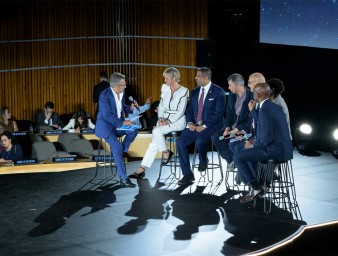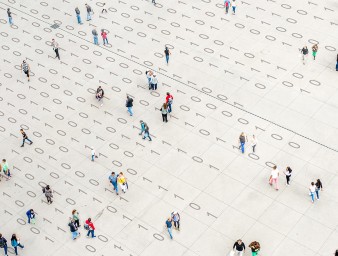Artificial Intelligence and the Sustainable Development Goals
10 May 2022
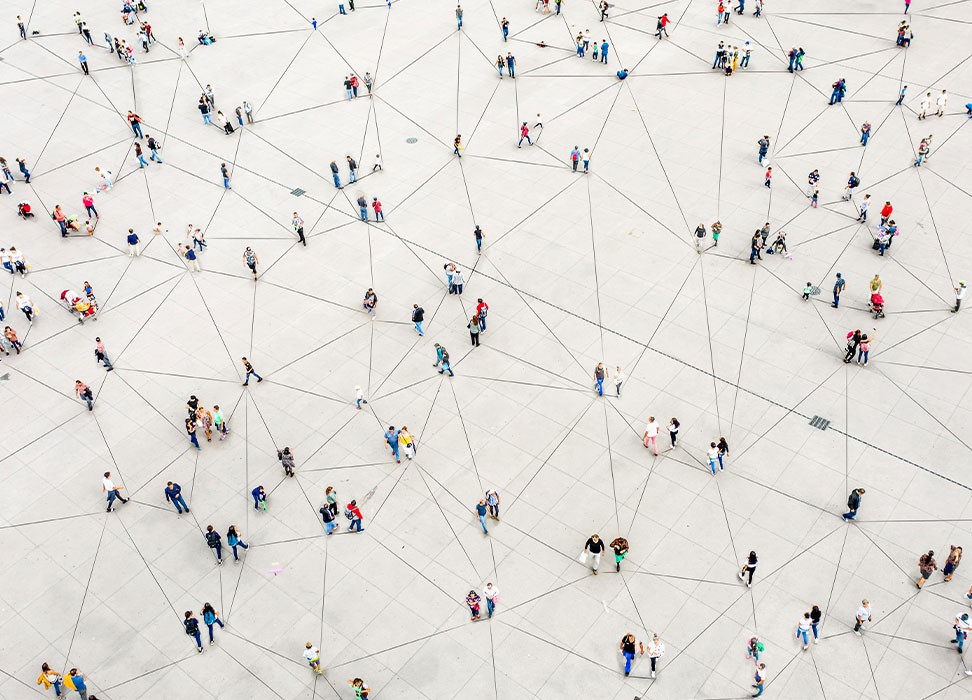
How do you manage ever-growing amounts of human rights guidance, including almost 180,000 individual observations and recommendations from UN human rights mechanisms, and ensure easy access to everyone, including the general public, governments, NGOs and UN agencies? At the same time, how do you ensure this guidance has a real and positive impact on human rights worldwide?
One of the solutions, for UN Human Rights, lay in an innovative partnership with the Danish Institute of Human Rights and a Danish social enterprise called Specialisterne (“The Specialists”), an organisation which works with consultants on the autism spectrum who are skilled in solving challenging data puzzles.
When the Sustainable Development Goals (SDGs) were adopted in 2015, one of UN Human Rights’ aims was to make human rights guidance available to inform the national policies needed to implement them.
The result is that today, the Universal Human Rights Index (UHRI), the world’s largest and most comprehensive human rights database of guidance from the human rights mechanisms, is being powered by artificial intelligence, showing the links between this guidance and the SDGs.
Prior to this, the tens of thousands of observations and recommendations the Universal Periodic Review, Treaty Bodies and Special Procedures were being manually tagged, with OHCHR staff spending hours, days, weeks and months analysing and inputting information.
While this work is gradually being replaced by artificial intelligence, Mahamane Cissé-Gouro, Director of Human Rights Council and Treaty Mechanisms Division at UN Human Rights, explains that “While we are expecting to save thousands of hours in manual work, human rights experts will continue to undertake quality checks at every stage, which in turn further refines the precision of the algorithm.”
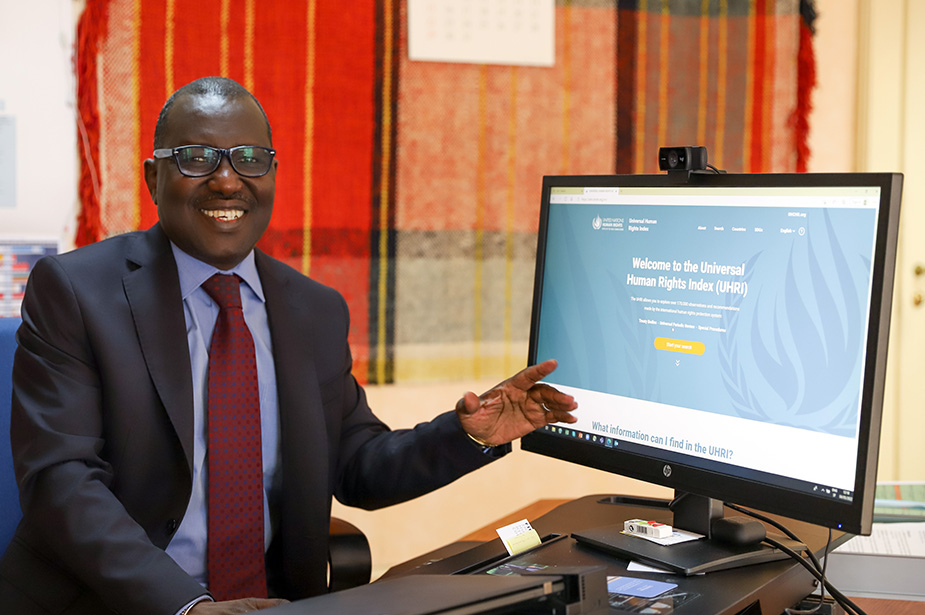
Mahamane Cissé-Gouro and the homepage of Universal Human Rights Index. It allows to explore over 180.000 observations and recommendations made by the international human rights protection system. © Petre Oprea / OHCHR
Make human rights more accessible
The partnership between UN Human Rights, the Danish Institute of Human Rights and Specialisterne began in 2017. It brought together a great diversity of skills, knowledge and approaches.
“We are talking about a level of information that no one human being can possibly digest,” says Birgitte Feiring, Director of Human Rights and Sustainable Development at the Danish Institute for Human Rights. “In pulling together these three very different organisations, at the end of the day, our common goal is to make human rights more accessible to rights holders, and to help them bring governments to account.”
For Feiring, the new algorithm makes human rights analysis, programming and planning much easier for governments. “When governments have to design a plan for sustainable development, for example, or for sustainable recovery from COVID-19, in a few clicks, they can find out what are the human rights problems facing older persons, or what the issues are related to access to healthcare and vaccines. They are also directed to the solutions, as advised by the various human rights mechanisms.”
The brain behind the algorithm
The individual who developed the algorithm – called ‘TextClassify’ – is physicist Niels Jørgen Kjær. Previously employed at the European Organization for Nuclear Research (CERN) in the capacity of High Energy Physicist, he now uses his expertise working for Specialisterne.
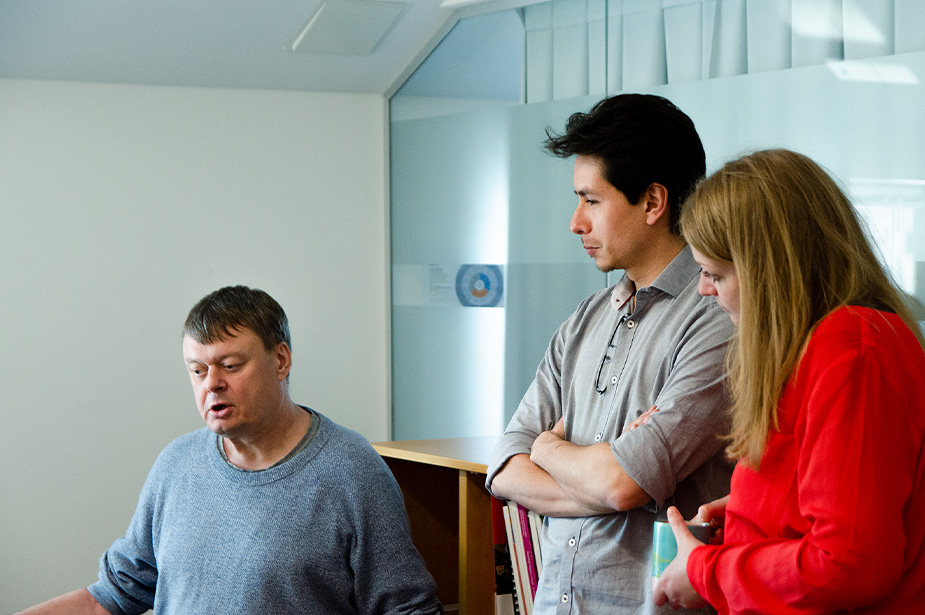
Niels Jørgen shares details of the latest developments with colleagues from DIHR, the algorithm can now classify texts into human rights topics. © Michael Länger / The Danish Institute for Human Rights
“The most challenging part of the algorithm was to make it scalable to very large data sets,” explains Kjær.
He says the central ingredient was the development of a fast multi-dimensional sorting algorithm, called ‘Mahjong.’ Mahjong evaluates an optimisation step in about 10 microseconds, and makes tests on millions of word combinations feasible.
The result is an algorithm that Kjær says can “handle millions of text snippets and thousands of categories, and still run everything in seconds on a PC.”
Unique brains key to success
Specialisterne is a self-described ‘socially innovative company’ where the majority of staff have a diagnosis on the autism spectrum. The company was founded in 2003 with the objective of providing better jobs and working conditions for neurodiverse talent.
According to CEO Carsten Lassen, autistic individuals are often known to find creative solutions and unusual perspectives in problem-solving when in the right work environment.

Carsten Lassen explains the added value that people with the autistic spectrum can bring to diverse workplaces © Pernille Sørensen / Specialisterne
“I often hear autistic persons say that their brain works like an algorithm, in that it tends to work in a more binary way than the neurotypical brain: if it’s not absolutely right, then it’s wrong. That’s exactly how algorithms are built and that’s the foundation for all programming,” Lassen says.
What does the algorithm do?
Because of the new algorithm, it is now possible to easily explore how human rights guidance can boost implementation of the Sustainable Development Goals by country, theme, or group of affected persons.
The UHRI now shows the concrete linkages between individual recommendations issued by UN human rights mechanisms and the 169 targets of the 2030 Agenda.
“For us it has been of great support to benefit from the innovations developed by our partners,” says Mahamane Cissé-Gouro, UN Human Rights. “Machine learning can dramatically improve efficiency and enable us to analyse and present the human rights work of the mechanisms in more accessible and visual ways.”
“We are proud to be part of a project where we can show the potential of this technology to promote human rights work,” says Cissé-Gouro. “We are particularly happy that the algorithm we are using has been developed in a way that provides a high degree of transparency and enables meaningful human oversight.”
For the future? UN Human Rights will continue to expand its work using the algorithm.
“The successful experience of integrating the algorithm on the UHRI has been a milestone for us,” explains Cissé-Gouro. “It continues to inspire our thinking on how we can analyse and present human rights guidance and information. We look forward to expand this work with our partners in the future driven by the aspiration of leaving no one behind.”
This story was originally published on ohchr.org on 10 March 2021.
